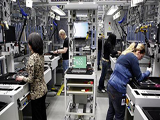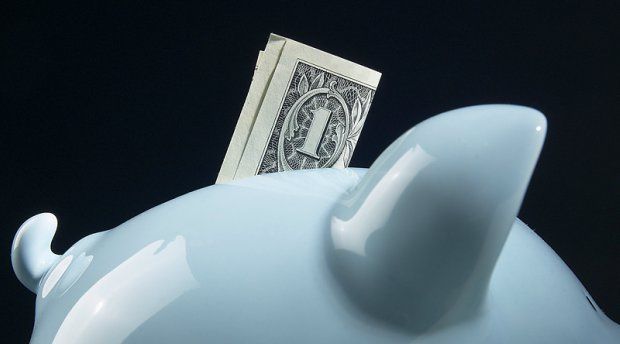Manufacturing Reshoring, Trickle Could Turn To Flood
Post Views 2
Bill Good as a student in the 1980 recalls that the company where he worked at Char-Broil LLC, a Columbus, Ga.-based maker of grills had to make the “painful decision” of moving production to China in 2004. In September last year, Mr. Good got a chance to reverse a small percentage of that outward flow, when he brought back production of that company’s Kitchen Aid hand mixers, to America. For the last six years, its mixers were being manufactured in Huizhou, China, near Guangzhou.
When Whirlpool took the decision to assemble the products at home again, “there were a lot of high fives going around, that’s for sure,” Mr. Good says.
However, this brought home only around 25 jobs. The return of some production to the US is not creating too many jobs. It has its limitations. In the case of Whirlpool, most of the components of the mixers are still made abroad. They just could not be made cheaply enough in the US.
Earlier this year the President was very appreciative of a Master Lock company he visited in Milwaukee and applauded them for bringing back some work from Asia. Master Lock’s move had created a 100 new jobs. Otis Elevator Co’s relocating production from Mexico to South Carolina will result in an additional 360 jobs. Companies like Caterpillar Inc., General Electric Co. and Ford Motor Co., who have joined the bring-back-production to America bandwagon, will create a few thousand more positions.
Manufacturing employment in the US is showing signs of resurrection. The 35 percent decline between 1998 and 2010 has seen a growth of 4.3 percent and manufacturing jobs have increased by 489,000. This job-increase is owing to a buoyant economy and not because of reshoring of production.
Harry Moser, president of the Reshoring Initiative, a nonprofit campaigning to bring back manufacturing jobs, thinks that, in the past few years, at least 25,000 manufacturing and related support jobs have been brought back to the U.S. That is a miniscule number, in the colossal unemployment statistics, but Mr. Moser thinks that as more and more companies, assess that it is more feasible to manufacture within the country, the potential is enormous.
Manufacturers say that there are many reasons why they manufacture out of the US, taxes, regulations, government incentives amongst others. They say, that after their experience of manufacturing in Asia, there will be no sense in manufacturing shoes and clothing within the country.
The relocate production back to the US has become appealing to the manufactures, as the wage-gap between China and US has considerably narrowed. The drop in the US dollar has made US produced goods more competitive and increased gas prices has increase the cost of freight.
David Simchi-Levi, an engineering professor and supply-chain expert at the Massachusetts Institute of Technology, surveyed 105 companies early this year and concluded that 39% US manufacturers were contemplating moving some manufacturing back to the U.S.
However, China and other Asian countries score above the US on many fields. Expertise and supplier networks have become so deep-rooted that they have become unshakeable. Moreover, the US lacks skilled and technically competent workers and US corporate taxes are amongst the highest in the world.
Dr. Simchi-Levi found that companies are becoming more regions centric, Asian plants serve Asian customers, North American ones serve Americans.
Not all products can be reshored. Cort Jacoby, a supply-chain expert at Hackett Group, a consulting firm said, that producers most likely to be reshored are bulky items are heavy and huge items whose transportation freight would be high, things like heavy machinery. Other things could include expensive items, for fashion aficionados, whose taste change frequently, clothing and home-accessories for the elite and items that require health monitoring, like baby products. All these, Jacoby feels, are most likely to be reshored.
Justin Rose of Boston Consulting Group has conducted an interesting study that show the wages paid to Chinese laborers and compares them with wages paid in the US. Even though the labor costs have increased, China holds the upper hand in terms of labor costs. At Whirlpool’s Greenville plant a worker on average earns about $12.40 to $16.50 per hour, plus benefits. In China, the workers earn as little as $3.40 to $3.50 per hour.
However, the gap is narrowed, as Mr. Rose estimates, those workers in US, thanks to better technology and automated machines, produces three times as much as their Chinese counterparts.
Current trends suggest that U.S. consumers could see more products labeled “Made in the USA” on store shelves in the near future.
Manufacturing Reshoring, Trickle Could Turn To Flood by Harrison Barnes


 Start a Business in 2 Weeks
Start a Business in 2 Weeks  Build Your Personal Brand Before Transitioning to a New Job
Build Your Personal Brand Before Transitioning to a New Job  When Low Paying Jobs Are Worth It
When Low Paying Jobs Are Worth It  How to Select a Search Firm That Is Right for You
How to Select a Search Firm That Is Right for You  9 Questions to Ask Before Working at a Startup Company
9 Questions to Ask Before Working at a Startup Company